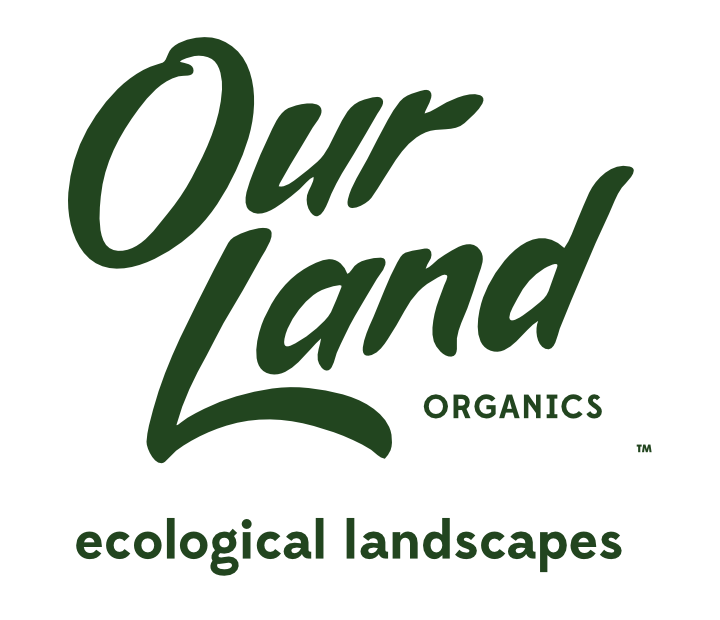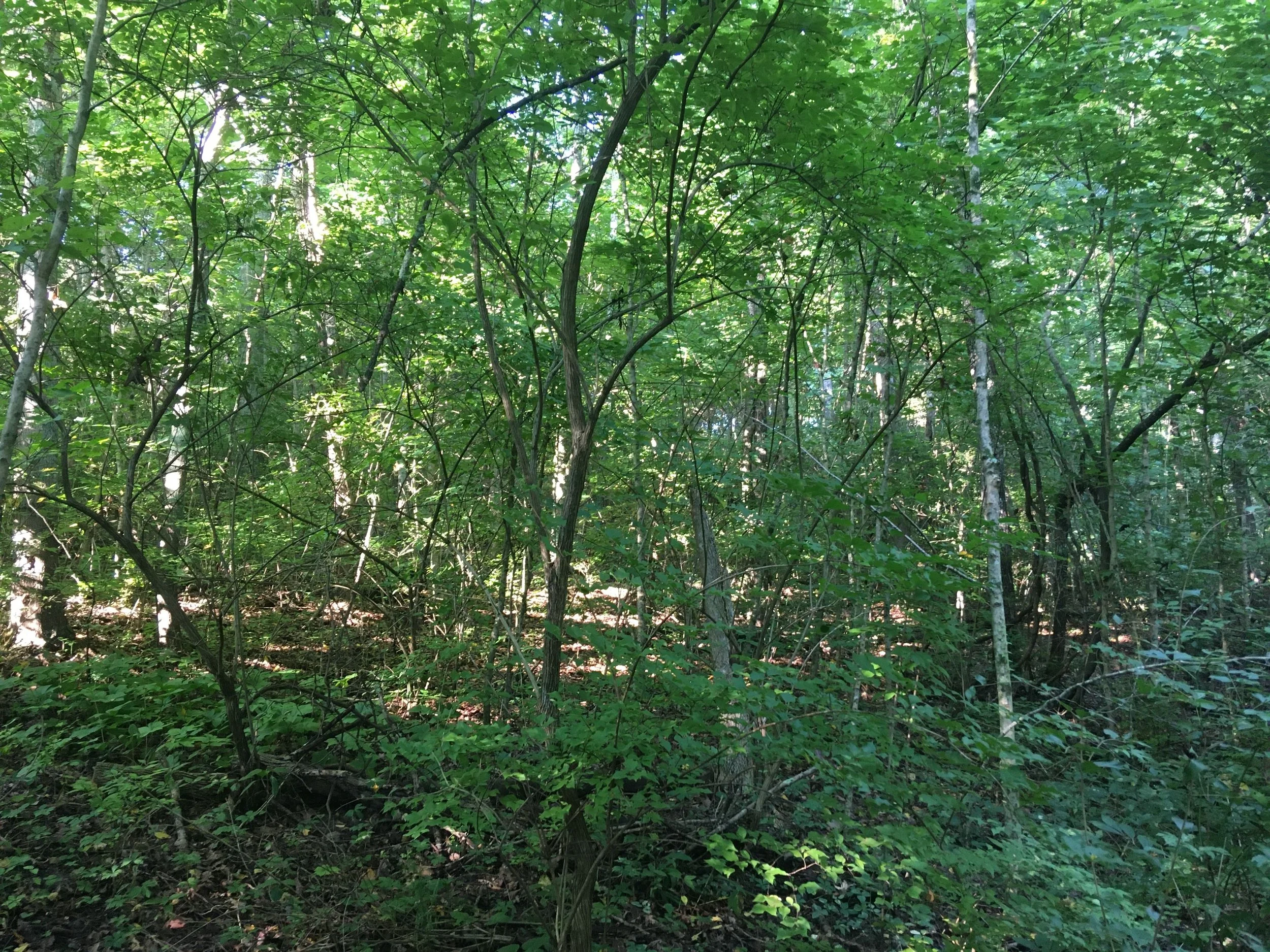Written By: Wesley Sexton, Client Relations Manager
There are nearly 200 species of honeysuckles in the Lonicera genus. Many of these species are vining plants, while others grow into arching shrubs.
A very few cultivated species, such as Lonicera sempervirens (Trumpet Honeysuckle) can provide a good food source to hummingbirds or bees and can be a good addition to an ecological landscape. Lonicera japonica (Japanese Honeysuckle), on the other hand, is an invasive form of honeysuckle with which many people are familiar. It commonly grows on fences or hedgerows and boasts fragrant, sweet-tasting flowers in the summer.
In this blog post, however, we will be focusing on Bush Honeysuckle (Lonicera maackii) and its multifaceted attack on Ohio’s native woodland ecosystems.
Bush Honeysuckle is not native to the Ohio River Valley region but was introduced from Asia as a well-intentioned attempt to prevent soil erosion on large farms. A multi-stemmed shrub growing up to 15 feet tall, Bush Honeysuckle is found in many Ohio yards. If left unchecked, it can strip an area of all biodiversity and turn a thriving woodland into a sterile monoculture.
Photo credit: Leonora (Ellie) Enking
Why Is Bush Honeysuckle Bad for Soil Health?
From the ground up, bush honeysuckle negatively impacts every component of a healthy ecosystem including the soil, the surrounding plants, and the native insect and bird populations.
Because of its shallow root structure and its tendency to out-compete other deeper-rooted plants, bush honeysuckle leaves soils particularly susceptible to erosion, especially on hillsides or near waterways.
As if that weren’t bad enough, the roots of bush honeysuckle also secrete a powerful toxin that prevents other seeds from germinating in surrounding soils. This means that, where bush honeysuckle is present, aging forests struggle to rejuvenate themselves and native soil-stabilizing understory plants struggle to establish.
Why Is Bush Honeysuckle Bad for Wildlife?
Bush honeysuckle germinates quickly and leafs out very early in the spring, shading out native plant seedlings and saplings trying to establish themselves on the forest floor. In areas where bush honeysuckle has gotten a foothold, you often see no other understory plants growing. This lack of biodiversity negatively impacts wildlife populations that rely on a variety of understory plants for food and habitat throughout the year.
While birds will eat the red fruit that grows from bush honeysuckle, those berries lack the proper nutrients birds need to thrive. Most insects are also unable to eat bush honeysuckle foliage, disrupting the natural food chain in yet another way.
Additionally, studies such as this one describe bush honeysuckle as an “ecological trap,” as birds that choose to nest in its branches suffer larger rates of predation and suffer from undernourishment. The low growth habit of bush honeysuckle simply does not provide birds with the adequate cover they need to safely nest, and the low-energy fruit produced by bush honeysuckle does not provide them with the energy needed to thrive.
Yet another study has found the invasion of bush honeysuckle negatively affects beaver communities by out-competing plants that provide better building materials. Even in areas featuring dense bush honeysuckle growth, beavers will travel to find other suitable dam-building materials.
Why Is Bush Honeysuckle Bad for Humans?
In addition to the multifaceted ecological damage done by the overwhelming presence of bush honeysuckle in our woodlands, there are a number of other human-centered ways that bush honeysuckle makes life unpleasant.
Firstly, bush honeysuckle can serve as a haven for undesired pests such as ticks and mosquitoes. Rather than spraying pesticides every month, which can severely disrupt pollinator populations, homeowners can reclaim their outdoor areas by removing invasive species that benefit pest species while leaving native wildlife unsupported.
Additionally, the density with which bush honeysuckle grows makes navigating woodland areas very difficult. State and National Parks expend a massive amount of time and resources removing bush honeysuckle and other invasive species just to keep their trails navigable.
For homeowners, this loss of navigability translates to wasted, unusable space on their property. When properly controlled, however, forests overrun by honeysuckle can be restored and transformed into usable space for trails, edible forests, playscapes, or wildlife sanctuaries. See, for example, what Our Land Organics was able to do with one Madeira backyard.
The Our Land Organics team removing bush honeysuckle from a client’s landscape
How to Control Bush Honeysuckle in Your Yard
Because of its shallow root system, manual removal of smaller bush honeysuckle is often possible. For larger shrubs, we recommend cutting the stump as close to ground level as possible and coating the stump with an OMRI-approved organic herbicide.
Unfortunately, invasive honeysuckle has been allowed to spread across the American continent for nearly 100 years, altering the forest landscape in significant ways that are not easy to undo. It is important to keep in mind that removing bush honeysuckle is the first step in a larger forest restoration process that can take multiple seasons.
At Our Land Organics, we like to approach forest restoration as a three-step process:
First, we remove bush honeysuckle.
Next, we assess what new native or invasive plant species might try to migrate to the cleared area.
Finally, we supplement new growth with native shrub and tree plantings designed to out-compete invasive plants.



